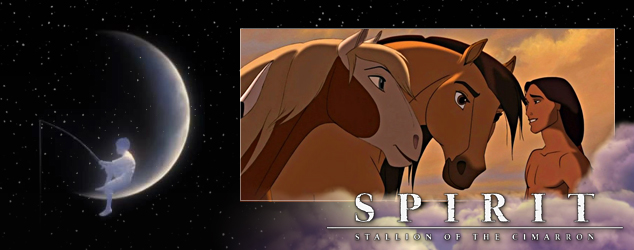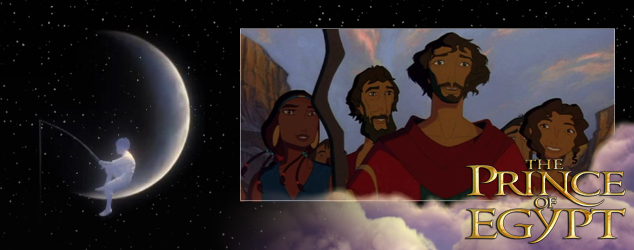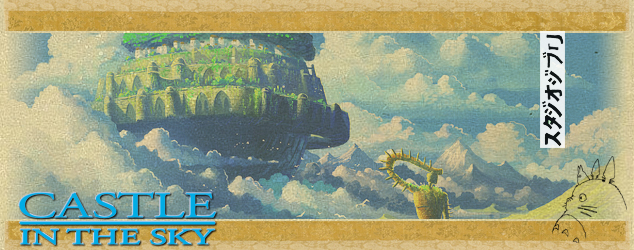by Kajsa Forden | Oct 20, 2017 | From the Author
When the fog rolls in across the bay, and you can hardly see your hand in front of your face, the saddened and desperate multiply in the darkness. The bridge, scarlet arches of golden opportunity, is there to welcome those who have shut the doors to any other option. Once there, the air is suffocatingly fresh and the only reminder of the ocean below is the crashing of the waves. You can stand there all night, surrounded by fog and dark thoughts, as I once did, and you can even gaze around in the faint hope that someone will see you, ask you what you’re doing, try to stop you. But, rather than spotting a guardian angel, I saw only another man, a man whose face resembled my own in its desperation and hopelessness. Perhaps that is why I hesitated my own destruction; his somehow seemed so much more urgent to stop.
I was running before I knew that I had moved, and shouting before I wanted my mouth to open. He jumped with more conviction than I ever could have felt, staring into a whirling abyss below. The tail of his coat and the hat from his head were the last of him swallowed by the great cloud of white fog. In all probability, I was the only one who saw him that night, the only one who would know about the missing man that would be advertised for in the papers in the following week, and the only one who would know exactly why. I didn’t know the man. I had no idea who he was, and I hadn’t seen his face properly either. What I had seen of him would burn in my brain for the rest of my life, as it burned against the back of my eyelids then, a repeating scene.
I stood there for maybe another hour, glancing every few minutes at headlights speeding by, foolishly considering forcing one to stop. That wouldn’t do. Instead, I paced, hands in pockets, taking only a few steps before kicking something solid. It wasn’t part of the bridge – my foot would have known immediately. No, this was something smaller, sized conveniently for a gentleman’s coat pocket. A small notebook it was and it teetered dangerously at the edge of a similar doom to its presumed original owner. Taking a step back, I knelt down, picked it up, and turned it once over in my hand. Another glance into the white, billowing ravine below told me it was time to go home, no matter how much my curiosity bribed me to sit down then and there, and read a dead man’s notebook.
(more…)
by Kajsa Forden | Oct 17, 2017 | From the Author, Get Motivated, Try Something New, Writing Session
I have never been one for diaries or journals, despite the near-constant narration my mind supplies throughout my daily life. Whether I’m making a mental checklist, writing out a vignette from my day, or putting together little blurbs inspired by people, words, and scenes I witness in everyday life, words are my consistent companion.
I may not keep a diary, but you can bet I have a generous stock of notebooks. And I will probably buy more soon. Sometimes my train of thought switches track too quickly for a pencil; notebooks are my sidekick while I travel or while I’m drafting or while I’m writing lists. Even if your main writing medium is technological, as mine is, notebooks can serve as a fine outlet to scribble the mess of thoughts your mind keeps creating. Then you can digitize those scribbles as you decipher them.
There’s little doubt that we wordsmiths need a brain outlet, especially when between projects or struggling to start a new one. Here will be an amalgamation of writerly brain food – research, prompts, writing, creating, editing, little procrastinations, and many other creative stimuli. Most of all, My Storytelling Mind will be a writer’s resource, meant to both motivate and listen. Use the site purely for inspiration or information, or get involved in the conversation. Either way, MSM is here to support your creativity, your writing, and your imagination.
Stay tuned for daily prompts, world-building tips, inspirational posts, various research topics, and tricks to perfect your writing process.
Welcome to My Storytelling Mind!
by Kajsa Forden | Sep 15, 2017 | From the Author
This article was originally published on Rotoscopers.com

*Disclaimer: Spoilers ahead.*
The tale of a mustang in the days of the Old West, when great herds of buffalo still roamed the plains and the railroad was growing, Spirit: Stallion of the Cimarron faces westward expansion from the perspective of a wild horse. A steady story, with strong animation and enveloping music, this film takes on animal characters and plot without excessive anthropomorphism, dumbing down, or unnecessary comic relief.
Released on the 24th of May, 2002, Spirit was written by John Fusco (Hidalgo), directed by Kelly Asbury (the Shrek franchise) and Lorna Cook, and starred Matt Damon as Spirit’s narrative voice, James Cromwell as the Colonel, and Daniel Studi as Little Creek.
The Story
John Fusco was hired to write a screenplay based on an idea from Jeffrey Katzenberg; Fusco took the project very seriously. First, he wrote a novel for Spirit‘s story, and then adapted his own work into a screenplay for the film. In a way, that explains the film’s flow, built atop fully detailed prose rather than starting from storyboards and screenplay.
Although written with the added appeal of minimal dialogue, Spirit’s own narrative voiceover remains a constant through the film, initially welcome but sometimes unnecessary. The story is simple enough and visual enough to keep the viewer informed and intrigued. The viewer watches Spirit travel from his own gorgeous homeland to a military outpost to a Lakota village to the expanding railroad construction. It’s a grand Western adventure in every sense, except that there’s nary a cowboy in sight…
Read more on Rotoscopers.com
by Kajsa Forden | Sep 1, 2017 | From the Author
This article was originally published on Rotoscopers.com

Jeffrey Katzenberg, co-founder of DreamWorks Animation, often suggested an animated adaptation of 1956’s The Ten Commandments while still working at Disney; although Disney CEO Michael Eisner dismissed the idea, fellow DreamWorks co-founder Steven Spielberg suggested it as DreamWorks Animation’s inaugural film. Even though it was usurped by Antz, which was rushed into theaters to compete with Pixar’s A Bug’s Life, The Prince of Egypt still made it to theaters in time for the 1998 holiday season.
Directed by Brenda Chapman (Brave), Steve Hickner (Bee Movie), and Simon Wells (Balto, Mars Needs Moms), the animated take on the story of Moses and the Hebrews of Egypt featured a star-studded cast, an extremely dedicated production team, and the musical genius of Hans Zimmer and Stephen Schwartz (The Hunchback of Notre Dame, Wicked) together.
“The motion picture you are about to see is an adaptation of the Exodus story.
While artistic and historical license has been taken, we believe that this film is true to the essence, values and integrity of a story that is a cornerstone of faith for millions of people worldwide.
The biblical story of Moses can be found in the book of Exodus.”
The black screen and opening text, accompanied by Hans Zimmer’s beautiful opening score, is a soft prelude to a harsh opening scene, featuring hundreds of slaves working under brutal conditions.
Schwartz’s compelling “Deliver Us” rises with the brutality as we witness the Egyptian soldiers forcibly removing Hebrew babies from their homes.
But still a moment of softness: Yocheved sings her last lullaby to the baby Moses as she sets him afloat along the river to save his life.
For an animated film to take on such real and harsh human experiences is unusual within itself; but The Prince of Egypt does so almost unflinchingly, without extra sugarcoating or condescension toward the presumably, and largely, youthful audience…
Read more on Rotoscopers.com
by Kajsa Forden | Aug 9, 2017 | From the Author
“Hello?” The antique shop, tables strewn with papers and shelves brimming with long-forgotten memorabilia, seemed empty. The strong scent of pipe tobacco mingled with the general scent of age. I held up a large pile of letters. “I have your mail here.”
A young man – a man too young to work in such a shop – popped up from behind what I assumed to be the checkout desk. He adjusted his rectangular glasses but left his messy hair the way it was. His eyes narrowed as he finally focused on me, the mailman holding up a stack of bills with a nervous grin on his face. He suddenly seemed incredibly worried, as if I was somehow all wrong and should be ashamed to be so.
“You’re not Quincy,” he said, making his way out of behind the desk. He pushed aside several piles of disorganized items with his feet, in an agitated state. “Where is Quincy?”
“I… don’t really know,” I replied as he finally reached me. He raised an eyebrow and I took a small step back. He blinked a couple of times and then simply took the mail. “I’ll just… see myself out, then.”
He waved a dismissal as he wove through the piles back to the desk, sorting through the letters one by one. I turned to go, glancing around again at the full shelves. Behind a small tin robot, tucked under a monogrammed lunch pail, a small golden badge stuck out. I gently tugged it, after a cautionary glance at the interesting store owner who was mumbling over a bill he had opened, and revealed a small key. The badge, upon squinting inspection, was engraved with the number 210.
(more…)
by Kajsa Forden | Aug 5, 2017 | From the Author
It’s not easy being a lamppost. All I do is carry the current, wake up the light bulb, and make him hold the current. Technically, he does most of the work. I just make sure he wakes up for the night shift.
It gets lonely, though. I sleep during the day and then work at night but Bulb doesn’t talk all that much and neither do the Traffic Lights. I wouldn’t want to talk to them anyway. If you’ve ever tried talking to a Traffic Light, you know how the conversation goes.
“Red?” I’ll say.
“Yeah, what? STOP!” Red will shout.
“What?”
“No, not you. What were you saying?”
“I just– ”
“GO!” Green will shout.
“What?”
“No, not you,” Green will respond.
“What were you saying, again?” Red will say.
“SLOW!” Yellow will shout.
“What?”
“Not you!” they’ll shout.
“Oh.” Yeah.
The cars passing by might say a few words, but altogether not that much happens. While they don’t say much to me, they say a lot to each other. For example, a Ferrari and a Thunderbird once had a discussion about their exhaust systems.
“I swear, mine’s been tootin’ somethin’ fierce! And my driver doesn’t seem all that worried,” said the Thunderbird, as Red screams, “STOP!”
“I know what you mean. My driver is always taking me to Al’s Mechanics. They must be completely understaffed there. I didn’t get any service for 3 hours and when I did get service, it was horrible. They don’t even wear gloves!” exclaimed the Ferrari.
“I know! I feel so violated.”
“I’ll see you later. I’m turning here.”
“Bye, Ferr, always a pleasure!”
That or they talk to their drivers. Once, a Honda CRV spent the whole 3 minutes of a red light complaining to their driver. “You don’t even pay attention, do you? You almost made me hit a squirrel back there! We could have driven off the road into that ditch! But I bet you didn’t even see that ditch, did you? Oh no, you just kept drivin’ with your shades and your rock n roll blasting out my stereo system. You know, I do have ears and it hurts just as much when you blast it! Hey, bimbo! It’s green, in case you care. Oh, now you move, when it’s yellow. How did you pass your driving exam?”
You would think that the cars would have realized by now that the humans don’t understand…
Thank you for reading this excerpt of my short story, ‘Gone On Impact’
by Kajsa Forden | Jul 15, 2017 | From the Author
This article was originally published on Rotoscopers.com
Opening with a #DreamBigPrincess homage video, featuring everyday princesses from around the globe, the Power of the Princess panel already tugged at the audience’s nostalgia-coated heartstrings.
Hosted by animators Kira Lehtomaki (co-head of animation, Wreck-It Ralph 2) and Amy Smeed (co-head of animation, Moana), the panel starred four of Disney’s most beloved princesses:
Auli’i Cravalho, the 16-year-old voice of Moana, was introduced with heavy applause and waved excitedly to the audience.
Anika Noni Rose, the voice of Princess Tiana, came out to thunderous cheers.
Paige O’Hara, voice of Princess Belle, brought several members of the audience to their feet with applause and cheers.
Jodi Benson, voice of Princess Ariel, was greeted with a near-standing ovation and several shouts of “I love you, Jodi!” to all of which she returned her affection…
Read more on Rotoscopers.com
by Kajsa Forden | Mar 17, 2017 | From the Author
This article was originally published on Rotoscopers.com

*Spoiler Alert: detailed film analysis below*
Laputa: Castle in the Sky, or 天空の城ラピュタ or Tenkū no Shiro Rapyuta, was Studio Ghibli’s first official film, released in 1986. It is unique because it was distributed under various names, with varied English dubs, and even a secondary score. The film solidified much of what the world would come to expect from Studio Ghibli and Miyazaki.
Castle in the Sky, as the name is often shortened, centers around the legendary floating island called Laputa. When Sheeta, a young girl, falls from an airship and is saved by her mystical amulet, young Pazu discovers her floating toward the main mine of the town where he works. After they meet, a daring and mythical adventure ensues, with dirigible airships, sky pirates and their flaptors, the military led by a greedy egotist, robots, magic elements, and beautiful animated environments…
Read more on Rotoscopers.com
by Kajsa Forden | Sep 29, 2016 | From the Author
This article was originally published on Rotoscopers.com
Disney has started a trend that most fans find upsetting: the constant announcement and production of ‘live-action’ remakes of classic animated films. Or, as Disney calls them, ‘reimaginings.’
Aside from the incredibly loose use of the term ‘live-action,’ this trend isn’t exactly new. Disney had a smattering of live-action/hybrid remakes in the 1990s: 101 Dalmatians, starring Glenn Close, and The Jungle Book (yes, Disney did it before). What is especially astonishing with the recent trend is both the amount of remakes and the unnecessary frequency of the films. We’re more likely to see remakes in the next few years than original live-action films from the creative giant.
One could argue the trend began in 2010, with Tim Burton’s Alice in Wonderland, but that hardly drew from the original Disney animated adaptation, if at all. Instead, many recognize the start of the ‘live-action’ remake list as Maleficent in 2014. Maleficent was, really, a reimagining of the most epic villain in Disney history – giving her an origin story that both explained her and reduced her bad-a** standing drastically. This was followed by Cinderella, in 2015, which featured a stellar cast and gorgeous costumes, but not much of the animated classic; The Jungle Book, in April this year, which was not live-action (save for Mowgli) but hyper-real CG animation, directed by Jon Favreau; and Pete’s Dragon, which premiered last month, modernizing the live-action/hybrid animation classic. As we pause to catch our breath, here’s a gentle reminder: we’re not even close to done yet…
Read more on Rotoscopers.com
by Kajsa Forden | Aug 20, 2016 | From the Author
Have you ever met a dragon? Anyone could be a dragon. You could be a dragon. I could be a dragon. Dragons can look just like you or me, should they choose. And, sometimes, you might catch the few signs that your friend is truly a dragon. Their scales do not disappear entirely, as they take on our form, oh no. Instead, their arms, legs, and the sides of their chest retain the color and feeling of their natural hide. Many dragons, therefore, wear long sleeves or gloves, even when the weather is warm. More recently, dragons have used heavy makeup on their arms, similar to that used to cover tattoos. A simple test can confirm your suspicions – do they ever swim? Have you ever seen them in short sleeves? Without a jacket or sweater? No?
Dragons have lived among us for centuries, millennia, and possibly farther back. Yet, their numbers have significantly decreased in the past 500 years – due to human interference. Remaining dragons have gone into hiding, only walking among us for brief visits or to check in on human progress. Those people who bought the house down the street but didn’t really move in or stay very long? Dragons. That person who seemed somewhat lost when you were out with friends? Dragon. In fact, it’s possible one of your substitute teachers was a dragon, and that new kid who didn’t stay more than a year definitely was.
You may wonder why you haven’t noticed such people before, or why they don’t simply fly around – which must be a more efficient way to travel. If you will allow me to answer your question with a question: were you really looking?
As to your second question, dear reader, dragons have long thought it best to remain secret from human thought. Considering how well differences in the human race have been handled, dragons haven’t had much confidence in humanity’s ability to accept another intelligent species. In all honesty, the mermaids and unicorns were the first to come to this decision, which is why all of these beings are now considered mythological, but more on that later.
Other than the casually visiting dragons, most dragons can be found far, far north. Their community is well-hidden but the council has decided it is high time their story is told. This decision does not come from faith in the human race, or misguided optimism; dragons have been discovered by a human and, rather than place their faith in his secrecy, the council prefers to put out their own version of dragonian history.
Thank you for reading!



